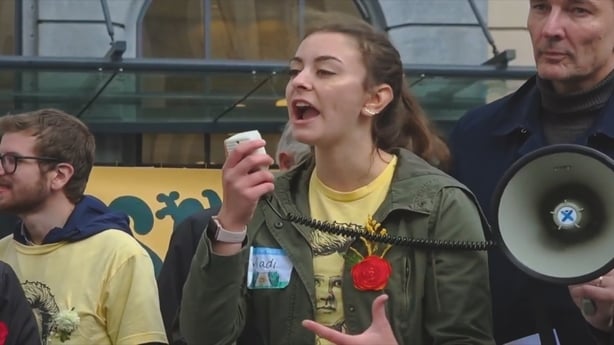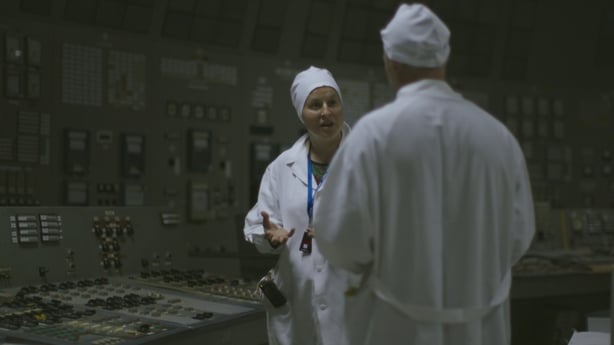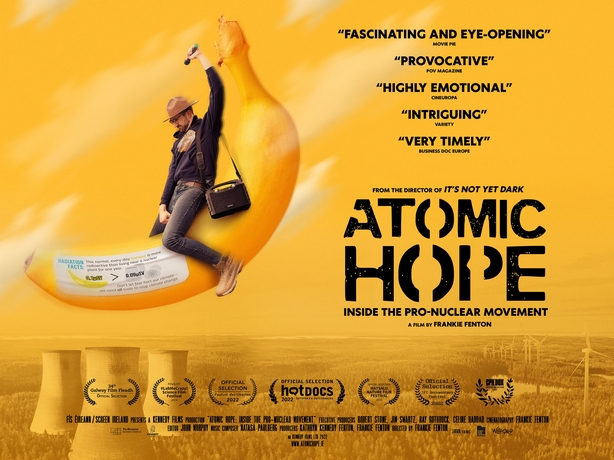Could nuclear energy be the solution to the climate crisis? Award-winning filmmaker Frankie Fenton introduces his new documentary, Atomic Hope, which explores this very question, following a group of highly unpopular "pro-nuclear" activists who controversially believe we now need to urgently re-address our feelings on nuclear power.
Why did I spend ten years filming a documentary about pro-nuclear activists?
My father was diagnosed with throat cancer when I was 11 years old. As a young family it felt like our entire world had turned upside down. This was an all too common story for county Louth in the early 90s. Thankfully he was able to make a full recovery. However, a teacher in my school remarked, in passing, that his cancer was likely caused by the Sellafield Nuclear power plant.
Sellafield was more famous in the 90's. It rebranded to Sellafield from Windscale after a fire in 1957, now 66 years ago. Local inquiries of the plant causing still births, clusters of downs syndrome and even spina bifida were common where I grew up. We now know, after decades of rigorous studies, that none of this was true. Still, like most people, my life was full of these anecdotal stories when it came to fears surrounding nuclear power. In religion class we watched terrifying films like When the Wind Blows and Dr Strangelove. Blurred lines between atomic bombs and electricity plants were common in discourse. After school my favourite show, The Simpsons, parodied nuclear plants run by haphazard employees causing regular meltdowns and producing three eyed fish in nearby lakes and rivers.
We need your consent to load this rte-player contentWe use rte-player to manage extra content that can set cookies on your device and collect data about your activity. Please review their details and accept them to load the content.Manage Preferences
Listen: Atomic Hope - Frankie Fenton talks to RTÉ Arena
Ireland's nuclear conversation initially began a few years before I was born and like most other countries around the world, it began with protest. The Carnsore Point protests in Wexford, in many respects, was the place to be between 1978 and 1980. The concerts saw thousands of young people travelling, often for the first time, to see featured popular folk and rock musicians such as Christy Moore, Clannad and even a baby-faced U2. Also on the bill were politicians and activists including Petra Kelly, founder of the Green Party in Germany.
They were highly successful protests, and the government’s 'out of touch’ plans to build Ireland’s first 650MW nuclear plant, enough to power 150,000 homes, were easily scrapped. This set a precedent around the world that the anti-nuclear movement could actually help stop this technology. Articulate arguments regarding radiation, waste and even wartime neutrality made sense to a youth so rarely given voice in a predominantly repressed Irish culture.

So instead, a coal fired power plant was built in Moneypoint in 1985. From that day to this, radioactive fly ash, from the daily burning of 7000 tonnes of black coal, is let lose directly into the Co. Clare environment. There is talk of this turning into a gas plant next, to back up expansion of wind and solar. This is all because in 1999, at the beginning of the energy crisis, we banned the production of electricity by nuclear fission. Although we do buy nuclear power from other countries. In 2002 an 11.9MW windfarm was built on the Carnsore 200-acre site. When the wind blows, it can help power 7,600 homes.
Every country has a different story when it comes to its relationship with nuclear power. But they all have one thing in common. Climate change changes everything. Over the last ten years I have seen a growth in young pro-nuclear activists and environmentalists around the world attempting to squash myths and fears surrounding this technology.

These are people who are actually optimistic for the future and they wear it on their faces. They didn’t grow up with that vague fear and anecdotal evidence. They see this energy density as a predominant part of an actual solution, for the protection of the biosphere and the replacement of fossil fuel. They argue that the only real world examples of replacing fossil fuels with carbon free energy at the rate we need to, are all with nuclear energy. They point to Scandinavia where the Finnish Green party recently "u-turned" , after conducting feasibility studies, becoming pro-nuclear overnight. And of course there’s Sweden, who in 10 years, built 10 plants and completely decarbonized their electricity.
In the context of the climate crisis we live in now, that stagnant looming 84% of world energy coming from fossil has simply not budged. Yesterday, energy giants Shell and BP reported record annual profits. They’ve more than doubled.
These are the reasons I spent ten years filming a documentary about pro-nuclear activists.

Atomic Hope is on release in selected cinemas nationwide.
